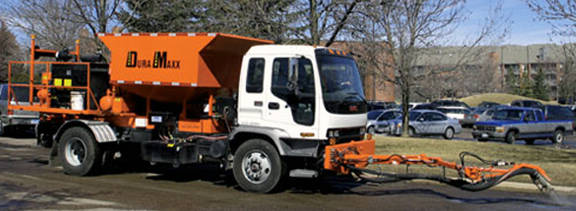Pothole Repair
REPORT A POTHOLE
How Are Potholes Created?
Most roadways are built in layers, starting with compacted earth and gravel. Some older city streets may even have a subsurface of bricks. All of these layers are covered with asphalt, which is a gooey blend of tar, oil byproducts, curatives and aggregate gravel. In an ideal setting, this layer of asphalt repels rainfall and snow, forcing it into drains or the shoulder of the road.
Potholes form because asphalt road surfaces eventually crack under the heat of the day and the constant stresses of traffic. These cracks allow snow and rainwater to seep into the underlying dirt and gravel. During cold winter nights, this water freezes and expands. Some of the dirt and gravel is pushed out as a result, leaving a hole when the water eventually melts. Drivers continue to drive over these unseen holes, putting even more stress on the thin asphalt layer covering them. Eventually, the asphalt layer over these divots collapses, creating the traffic hazards we call potholes.
Pothole Repair
The DuraPatcher is the most cost efficient method of road repair. Instead of men with shovels, tampers and hot mix, the DuraPatcher system cleans the area, applies a tack coat, sprays the emulsion/ aggregate mix into the pothole with sufficient force to compact the material as it is applied and then follows with dry aggregate to prevent lifting. More repairs can be done per day with less labor. In addition, using this method adds to laborers' safety by greatly reducing their exposure to oncoming traffic.

DuraPatcher Road Repair Truck
Contact Us
Mathew Goranson
Department Head
Phone: 856-453-2192
Emergency, After Hours - 911
Fax: 856-455-5857
Karen Montana
Confidential Aide
Phone: 856-453-2192
SERVICE REQUEST
Public Works
800 E. Commerce Street
Bridgeton, NJ 08302
Hours
Monday through Friday
8:00 AM - 4:00 PM
Additional Links